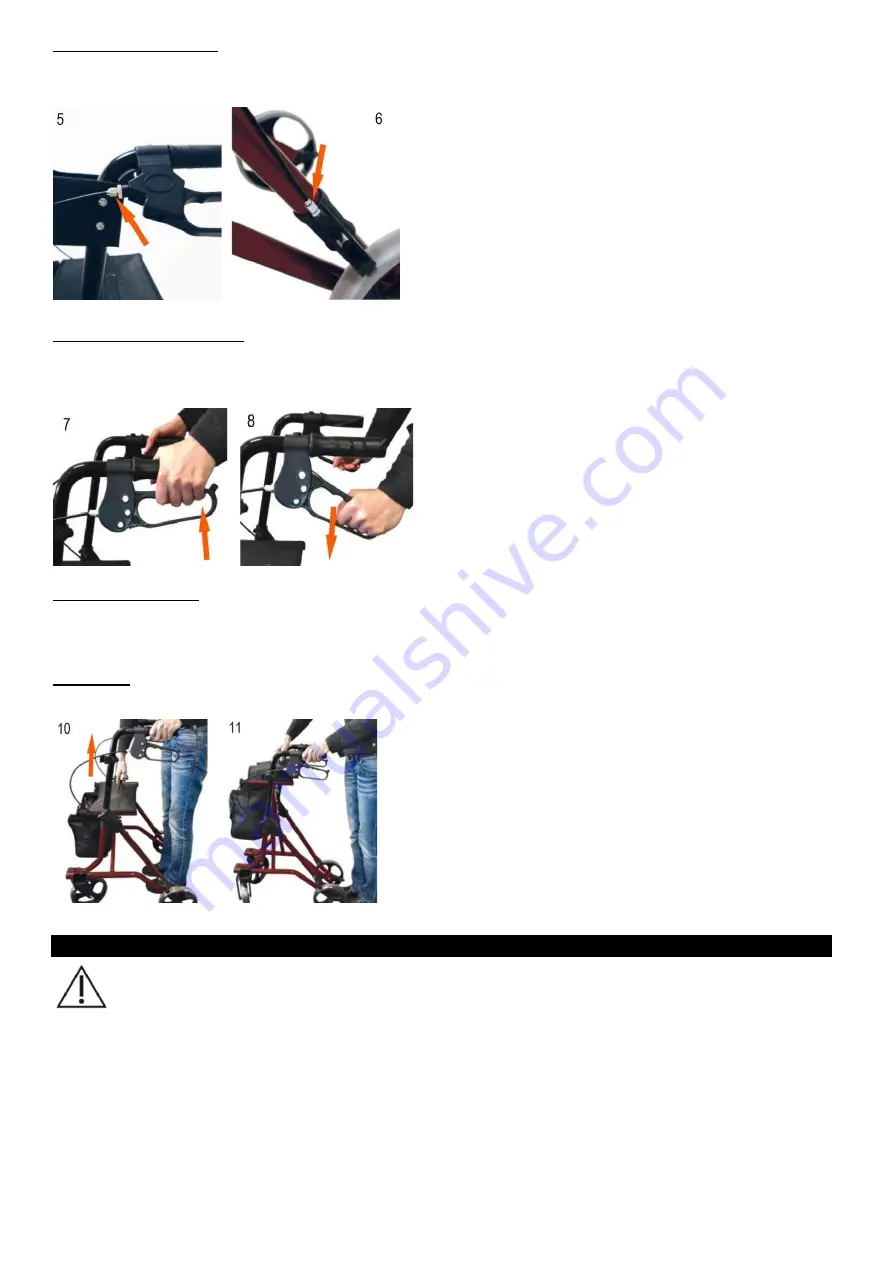
8
BRAKE ADJUSTMENT :
If the braking is too weak or too abrupt, the brake can be adjusted to the desired tension either above, on the handle (see 5
below), or below, with a suitable tool (not supplied) at the adjustment screw on the cable (see 6 below).
USE OF BRAKE HANDLES :
To slow down, squeeze the handles slightly with your fingers. Squeeze the handles simultaneously on the right and left (see 7
below). To lock the brakes, for example to stop the rollator, push both handles down firmly (see 8 below) until they lock. A
"click" will be heard, indicating that the lock is secure. To release the brakes, pull up both handles (see 7 below).
The action of the brakes can be influenced by tyre wear.
It is
therefore necessary to check the brakes regularly.
SITTING POSITION :
Place the rollator on a flat, stable surface. Then
lock the brakes
in the parking position as described above. The rollator should
be stable and not move. Sit upright and do not lean back.
FOLDING
:
To fold the rollator, pull the seat up using the handle and fold the rollator to either side. (See 10 and 11 below).
CARE AND MAINTENANCE
Failure to care for and monitor your product may result in the risk of serious injury.
•
Clean the rollator regularly with warm water and a soft cloth. Do not use abrasive products, detergents or solvents.
•
Dry with a clean, dry soft cloth.
•
Make sure there is no accumulation of dirt or debris around the axle, brakes or wheels.
•
Do not use cleaning products containing phenol or chlorine, as this could damage aluminium and polyamide materials.
•
Lubricate the wheels with a little oil if they squeak.
•
Periodically check the wear and strength of all screws and bolts. Replace all broken, damaged or worn parts immediately.
•
Check that the brakes are working before each use.
































